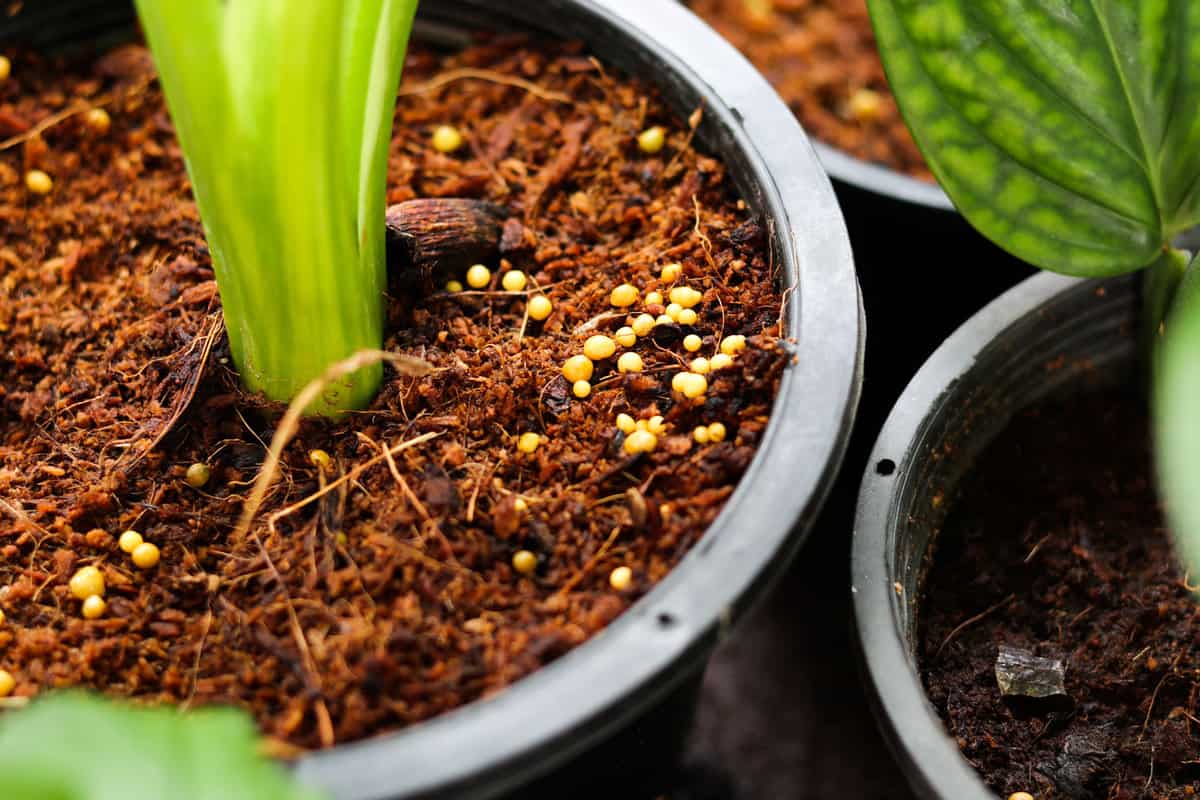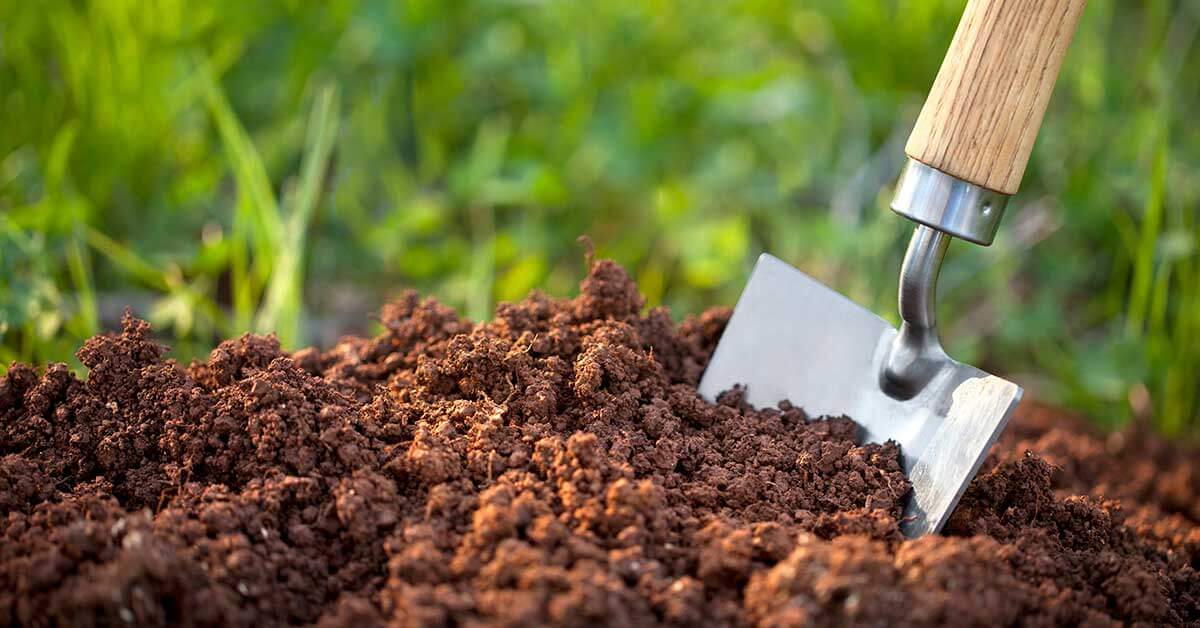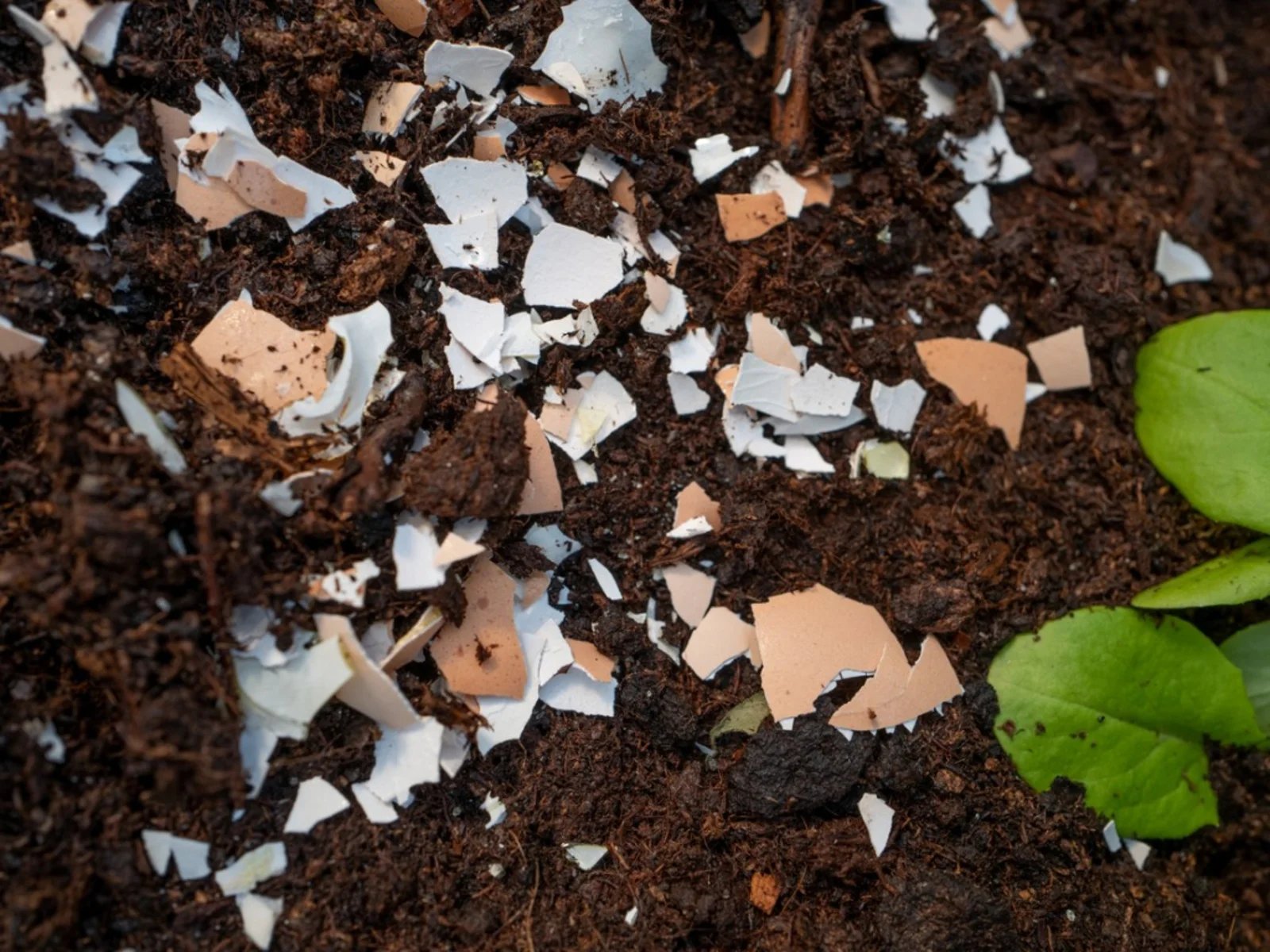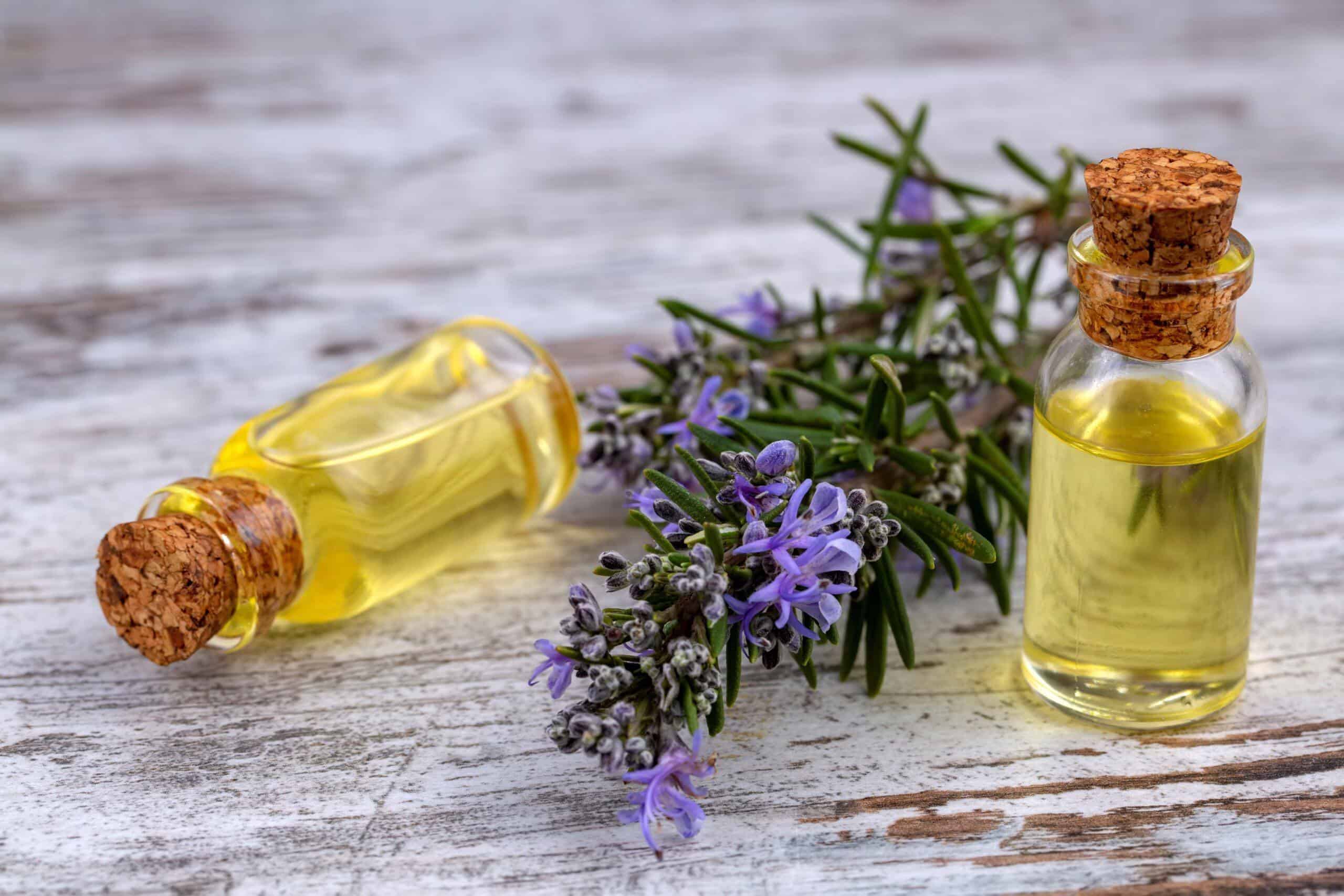Home>Types of Gardening>Edible Gardening>How To Use Annatto Seeds
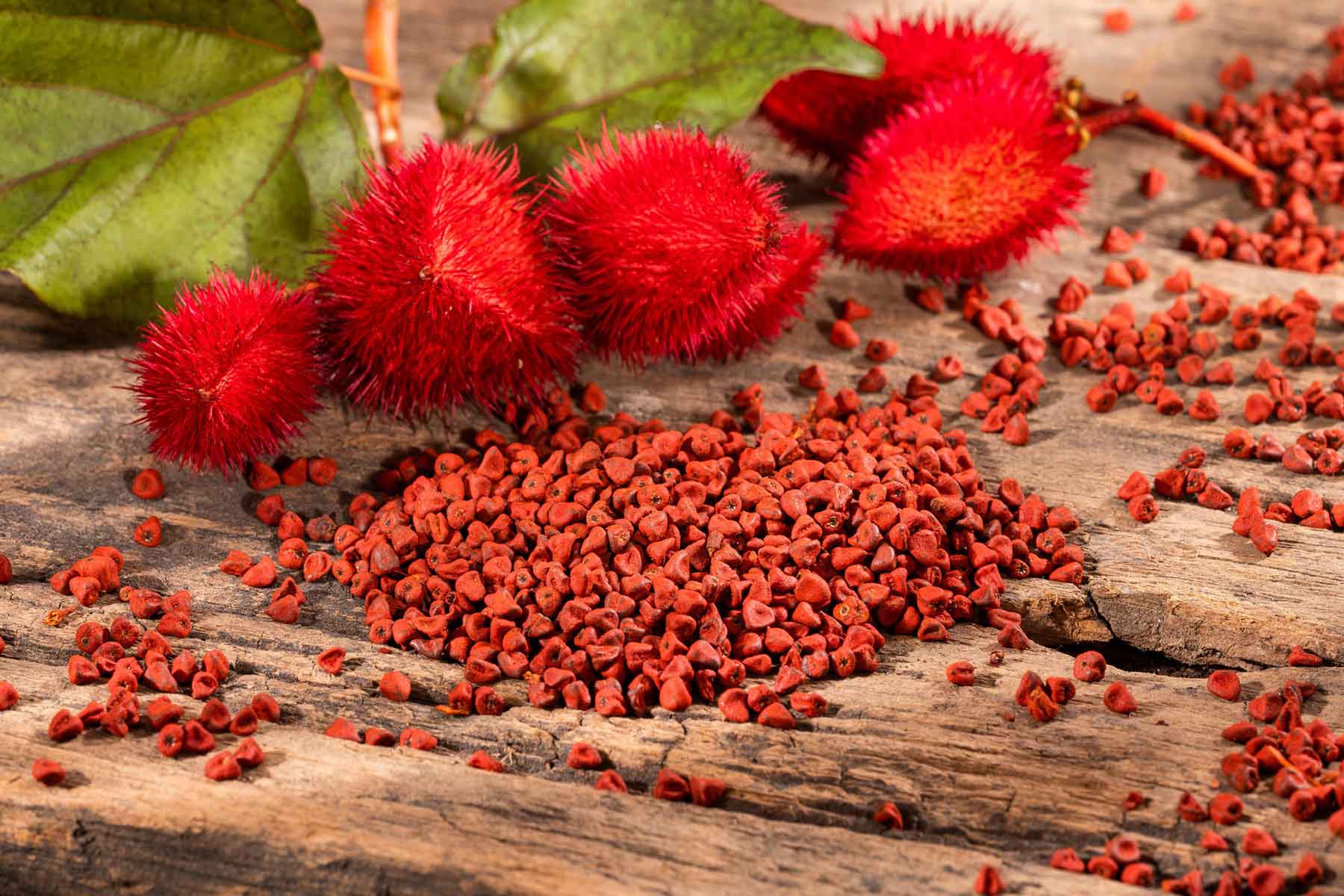

Edible Gardening
How To Use Annatto Seeds
Modified: January 22, 2024
Learn how to use annatto seeds in your edible gardening endeavors to add vibrant color and flavor to your dishes. Discover the benefits and various ways to incorporate this versatile ingredient into your culinary creations.
(Many of the links in this article redirect to a specific reviewed product. Your purchase of these products through affiliate links helps to generate commission for Chicagolandgardening.com, at no extra cost. Learn more)
Table of Contents
- Introduction
- What are Annatto Seeds?
- Culinary Uses of Annatto Seeds
- Health Benefits of Annatto Seeds
- How to Choose and Store Annatto Seeds
- Step-by-Step Guide to Using Annatto Seeds
- Alternative Uses for Annatto Seeds
- Precautions and Side Effects of Annatto Seed Consumption
- Frequently Asked Questions (FAQs) about Annatto Seeds
- Conclusion
Introduction
Welcome to the wonderful world of annatto seeds! If you are a culinary enthusiast or someone who loves experimenting with new flavors, then annatto seeds should definitely be on your radar. These small, reddish-brown seeds are packed with rich flavors and vibrant color that can elevate your dishes to a whole new level.
But what exactly are annatto seeds? How can they be used in cooking? What are their health benefits and potential side effects? And most importantly, how can you incorporate annatto seeds into your own edible gardening journey? Well, fret not! In this comprehensive guide, we will answer all these questions and more.
Originating from the tropical regions of the Americas, annatto seeds have been used for centuries for their culinary and medicinal properties. They are derived from the annatto tree, scientifically known as Bixa orellana, which is native to the Caribbean and South America.
Annatto seeds are well-known for their vibrant orange-red color, which comes from the natural pigment known as annatto, bixin, or sometimes called achiote. This natural dye has been utilized by various cultures for centuries to add color to textiles, cosmetics, and most notably, food.
Nowadays, annatto seeds are widely used in cuisines across the globe, particularly in Latin American, Caribbean, and Southeast Asian dishes. Their mild, somewhat peppery flavor with a hint of sweetness makes them a versatile ingredient that can be incorporated into both savory and sweet dishes.
Not only do annatto seeds add a pop of color to your recipes, but they also offer a range of health benefits. From being a rich source of antioxidants to having potential anti-inflammatory and antimicrobial properties, annatto seeds have earned a reputation as a beneficial ingredient for overall well-being.
Whether you are an experienced gardener looking to diversify your crop or a beginner interested in growing your own edible plants, annatto seeds are an excellent addition to your garden. With their ornamental annatto tree, easy maintenance, and bountiful harvest, annatto seeds are a perfect choice for those who want to explore the world of edible gardening.
So, get ready to embark on a flavorful journey as we dive into the culinary uses, health benefits, storage tips, and step-by-step guide to using annatto seeds. Let’s uncover the secrets of this magical spice and discover how it can transform your dishes into works of art!
What are Annatto Seeds?
Annatto seeds, also known as achiote seeds, are small reddish-brown seeds derived from the annatto tree (Bixa orellana). The annatto tree is native to the tropical regions of the Americas, including the Caribbean and South America. The seeds are encapsulated within spiky red pods, which burst open when ripe, revealing the vibrant seeds inside.
Annatto seeds are known for their unique properties, primarily their rich color and subtle flavor. The bright orange-red hue of annatto seeds comes from the natural pigment called annatto, bixin, or achiote, which is extracted from the seeds. This pigment is widely used as a natural food dye, imparting a vibrant color to various culinary creations.
In terms of flavor, annatto seeds provide a mild, somewhat peppery taste with a slight hint of sweetness. This distinct flavor allows annatto seeds to be a versatile ingredient in both savory and sweet dishes, adding depth and complexity to recipes without overpowering other flavors.
Annatto seeds have been cherished for their culinary and medicinal properties for centuries. They have been a staple in Latin American, Caribbean, and Southeast Asian cuisines, where they are used to add both color and flavor to traditional dishes.
Beyond their culinary uses, annatto seeds also offer a range of health benefits. They are a rich source of antioxidants, which help combat the damaging effects of free radicals in the body. Antioxidants play a vital role in maintaining overall health and reducing the risk of chronic diseases.
Furthermore, annatto seeds are believed to have potential anti-inflammatory and antimicrobial properties. Some studies suggest that annatto seeds may have a positive impact on gut health, immune function, and even skin health. However, more scientific research is needed to fully understand and confirm these potential benefits.
In summary, annatto seeds are small reddish-brown seeds obtained from the annatto tree. They are famous for their vibrant orange-red color and mild, peppery flavor. Used in cuisines around the world, annatto seeds add a captivating visual appeal and a unique taste to dishes. Additionally, they offer potential health benefits due to their antioxidant properties and are believed to possess anti-inflammatory and antimicrobial properties. Whether you are a culinary enthusiast or an avid gardener, exploring the world of annatto seeds can open up a whole new realm of flavors and experiences.
Culinary Uses of Annatto Seeds
Annatto seeds have a rich and diverse culinary history, making them a beloved ingredient in many cuisines worldwide. Their vibrant color and unique flavor make them a versatile addition to a variety of dishes. Let’s explore some of the exciting culinary uses of annatto seeds:
- Natural Food Coloring: One of the primary uses of annatto seeds is as a natural food coloring agent. The annatto pigment extracted from the seeds is used to add a vibrant orange-red color to food and beverages, such as rice, sauces, soups, stews, and even baked goods.
- Seasoning for Savory Dishes: Annatto seeds are commonly used as a seasoning in savory dishes. The seeds can be ground into a powder or infused in oil to release their color and flavor. They are often added to marinades, rubs, and spice blends for meats, poultry, and seafood to enhance the taste and provide a visual appeal.
- Traditional Dishes: Annatto seeds are an integral part of many traditional recipes. In Latin American cuisines, they are used in dishes like achiote paste, which is a blend of annatto seeds, spices, and vinegar, commonly used in marinades for grilled or roasted meat. In Filipino cuisine, annatto seeds are used to prepare dishes such as kare-kare, a peanut-based stew, and chicken adobo.
- Flavoring Rice: Adding annatto seeds to rice can give it a beautiful golden color and a subtle nutty flavor. It is commonly used in Latin American, Caribbean, and Filipino cuisines to prepare dishes like arroz con pollo, paella, and annatto-infused rice served with stews and curries.
- Beverages: Beyond food, annatto seeds can also be used to give a vibrant touch to beverages. They are often steeped in hot water or mixed with other spices to make vibrant herbal teas or infused into alcoholic beverages like cocktails and liqueurs.
It’s worth mentioning that annatto seeds can be used whole, crushed, or ground, depending on the desired intensity of color and flavor. The key is to release the natural pigments and oils by heating or steeping the seeds in liquid or oil.
Overall, annatto seeds bring not only a stunning visual element to dishes but also a unique flavor profile that adds depth and complexity. So, whether you’re looking to add a burst of color to your recipes or infuse them with an intriguing taste, annatto seeds are a must-have ingredient in any culinary enthusiast’s pantry.
Health Benefits of Annatto Seeds
Annatto seeds not only add color and flavor to your dishes but also offer a range of potential health benefits. Packed with nutrients and bioactive compounds, annatto seeds have been utilized in traditional medicine for their medicinal properties. Let’s explore some of the potential health benefits of annatto seeds:
- Antioxidant Powerhouse: Annatto seeds are rich in antioxidants, specifically carotenoids like bixin and norbixin. These antioxidants help neutralize harmful free radicals in the body, preventing oxidative damage and reducing the risk of chronic diseases such as heart disease, cancer, and age-related macular degeneration.
- Anti-Inflammatory Properties: Studies suggest that annatto seeds may possess anti-inflammatory properties. The compounds found in annatto seeds, such as bixin and other phytochemicals, may help reduce inflammation in the body, potentially benefiting conditions like arthritis and inflammatory bowel diseases.
- Promotes Healthy Skin: Annatto seeds are a natural source of tocotrienols, a form of vitamin E that is known for its skin-protective properties. Vitamin E is a powerful antioxidant that helps nourish the skin, improve elasticity, and protect against UV damage. Including annatto seeds in your diet may contribute to healthier, more youthful-looking skin.
- May Enhance Digestive Health: Some studies suggest that annatto seeds may have beneficial effects on gut health. The bioactive compounds in annatto seeds have been found to exhibit antimicrobial properties, helping to inhibit the growth of harmful bacteria in the gut. Additionally, annatto seeds contain dietary fiber, which promotes healthy digestion and may contribute to a healthy gut microbiome.
- Source of Essential Nutrients: Annatto seeds are a good source of various nutrients, including vitamins, minerals, and dietary fiber. They contain essential minerals like calcium, iron, and magnesium, as well as B-vitamins like niacin and riboflavin. Incorporating annatto seeds into your diet can help ensure you’re receiving these important nutrients.
While annatto seeds offer potential health benefits, it’s important to note that more research is needed to fully understand their effects on human health. It is always recommended to consult with a healthcare professional before making any significant dietary changes or relying solely on annatto seeds for medicinal purposes.
It’s also worth mentioning that some individuals may have an allergic reaction to annatto seeds, especially those who are allergic to other seeds or nuts. If you experience any adverse reactions after consuming annatto seeds, it’s advisable to discontinue use and seek medical attention.
Incorporating annatto seeds into your diet can be a flavorful and nutritious addition. Whether you sprinkle them on your dishes, infuse them in oils, or use them as a natural coloring agent, annatto seeds provide a unique culinary experience with potential health benefits. So, get creative in the kitchen and explore the world of annatto seeds while reaping the potential rewards for your overall well-being.
How to Choose and Store Annatto Seeds
When it comes to selecting and storing annatto seeds, there are a few essential factors to consider to ensure you get the best quality and retain their flavor and freshness. Here are some tips on how to choose and store annatto seeds:
Choosing Annatto Seeds:
- Whole Seeds or Ground: You can find annatto seeds in whole form or pre-ground. For maximum freshness and flavor, it is recommended to choose whole annatto seeds and grind them as needed. Whole seeds have a longer shelf life and maintain their properties better than pre-ground seeds.
- Color and Freshness: Look for annatto seeds that have a vibrant reddish-brown color. Dull or faded seeds may indicate that they are old or have lost their potency. Fresh seeds will have a slightly sweet, aromatic smell.
- Source and Quality: Purchase annatto seeds from reputable sources to ensure their quality and purity. Organic and sustainably sourced seeds are often preferred for their higher nutritional value and absence of chemical residues.
Storing Annatto Seeds:
- Airtight Containers: Transfer the annatto seeds to airtight containers, such as glass jars or resealable bags, to protect them from moisture and air exposure. Ensure the container is clean and dry before transferring the seeds.
- Cool and Dark Location: Store the annatto seeds in a cool, dark place away from direct sunlight. Exposure to light and heat can degrade the quality and flavor of the seeds.
- Avoid Moisture: Moisture is the enemy of annatto seeds. Keep them away from humidity, as moisture can cause the seeds to spoil or become moldy. Make sure the container is tightly sealed to prevent any moisture from getting in.
- Optimal Shelf Life: Whole annatto seeds can retain their freshness for up to two years when stored properly. Ground seeds, on the other hand, have a shorter shelf life and should be used within six months for optimal flavor.
Remember to check the appearance and aroma of the annatto seeds before using them. If the seeds appear discolored or have a rancid smell, it is best to discard them and purchase fresh ones.
By following these guidelines for choosing and storing annatto seeds, you can ensure that you always have high-quality seeds on hand for your culinary endeavors. Whether you’re incorporating them as a natural food coloring or exploring their unique flavor in savory dishes, properly stored annatto seeds will contribute to delicious and visually stunning creations.
Step-by-Step Guide to Using Annatto Seeds
Using annatto seeds in your culinary creations is simple and can add a burst of color and flavor to your dishes. Here is a step-by-step guide on how to use annatto seeds:
Step 1: Gather Your Ingredients:
Start by gathering your ingredients. You will need annatto seeds, a mortar and pestle or spice grinder (if using whole seeds), and any other spices or ingredients for your recipe.
Step 2: Prepare the Annatto Seeds:
- If you have whole annatto seeds, you can either use them as is or grind them to release their flavor and color. To grind the seeds, place them in a mortar and pestle or a spice grinder. Grind until you achieve a coarse or fine powder, depending on your preference and the recipe requirements. Grinding the seeds helps release their natural oils and enhances their flavor.
- If you prefer to use the seeds without grinding them, you can infuse them in oil or other liquids to extract their color and flavor.
Step 3: Incorporate Annatto Seeds in Your Recipe:
Now that you have prepared the annatto seeds, it’s time to incorporate them into your recipe. Here are a few ideas on how to use annatto seeds:
- Infuse in Oil: One popular method is to infuse annatto seeds in oil. Heat a small amount of oil, such as olive oil or vegetable oil, in a saucepan. Add the ground annatto seeds and gently simmer the mixture for a few minutes, stirring occasionally. This process helps release the color and flavor of the seeds into the oil. Once done, strain the oil to remove the seeds and use the colored oil in your recipe.
- Add to Sauces and Marinades: Annatto seeds can be added directly to sauces and marinades to enhance their flavor and color. Simply sprinkle the ground annatto seeds into your sauce or marinade mixture and stir well to incorporate.
- Incorporate in Spice Blends: You can include ground annatto seeds in various spice blends to add depth and color. Mix them with other spices like paprika, cumin, and garlic powder to create unique rubs or seasonings for meats, poultry, and seafood.
- Use as a Natural Food Coloring: Annatto seeds are excellent for adding a vibrant orange-red color to your dishes. Use the ground annatto seeds or infused oil to color rice, stews, soups, sauces, and even baked goods.
Step 4: Adjust to Taste:
Remember that annatto seeds have a mild, slightly peppery flavor. Start by adding a small amount to your recipe, and then adjust according to your taste preferences. It’s always easier to add more annatto seeds than to dilute the flavor if you add too much initially.
Step 5: Enjoy Your Culinary Creation:
Once you have incorporated the annatto seeds into your recipe, continue cooking or baking as directed. The annatto seeds will infuse their lovely color and subtle flavor into your dish, creating a visually appealing and delicious final product.
Experimenting with annatto seeds will allow you to explore new flavors and create vibrant dishes that will awe your family and guests. So, let your culinary creativity flow and enjoy the wonders of annatto seeds in your cooking adventures!
Alternative Uses for Annatto Seeds
While annatto seeds are primarily known for their culinary uses, they have a few alternative applications beyond the kitchen. Here are some alternative uses for annatto seeds:
- Natural Dye: Annatto seeds have long been used as a natural dye. The vibrant orange-red pigment extracted from the seeds can be used to dye fabrics, yarns, and even handmade soaps. The dye can be obtained by soaking the seeds in hot water, then straining the liquid and using it to dye various materials.
- Cosmetics and Skincare: The natural color imparted by annatto seeds makes them a popular ingredient in cosmetics and skincare products. The annatto pigment is used in lip balms, blushes, eyeshadows, and other makeup products to add a warm, natural hue. The antioxidant properties of annatto seeds also make them suitable for natural skincare products.
- Traditional Medicine: In some traditional medicine practices, annatto seeds have been used for their potential medicinal properties. From promoting digestion to relieving cold symptoms, annatto seeds have been used in traditional remedies for various ailments. However, it’s important to note that scientific evidence supporting these uses is limited.
- Ornamental Plant: The annatto tree itself, from which annatto seeds are derived, can be grown as an ornamental plant. With its bright red pods and glossy green leaves, the annatto tree can add beauty to gardens and landscapes. Its compact size makes it suitable for both small and large spaces.
- Insect Repellent: Some cultures use annatto seeds as a natural insect repellent. The oil extracted from the seeds is believed to deter certain insects, including mosquitos and flies. However, it’s important to note that annatto seeds’ effectiveness as an insect repellent has not been scientifically proven.
These alternative uses highlight the versatility of annatto seeds beyond their culinary aspects. Whether it’s for their coloring abilities, potential medicinal properties, or ornamental value, annatto seeds offer a range of exciting and creative possibilities.
However, it’s crucial to exercise caution and conduct proper research before using annatto seeds for alternative purposes. Always consult reliable sources and expert guidance to ensure safe and appropriate usage in non-culinary applications.
Incorporating annatto seeds in alternative ways allows us to explore their unique properties, appreciate their cultural significance, and add a touch of natural beauty to various aspects of our lives.
Precautions and Side Effects of Annatto Seed Consumption
While annatto seeds are generally safe for consumption, there are a few precautions and potential side effects to keep in mind. Here are some considerations regarding annatto seed consumption:
- Allergic Reactions: Some individuals may have an allergic reaction to annatto seeds. Allergies to annatto seeds are rare but can cause symptoms such as itching, swelling, hives, or difficulty breathing. If you have a known allergy to nuts or seeds, it’s advisable to exercise caution or avoid consuming annatto seeds altogether.
- Unsafe for Certain Medical Conditions: Annatto seeds may interact with certain medications or exacerbate certain medical conditions. If you have any underlying health conditions or take medications regularly, it’s important to consult with your healthcare provider before incorporating annatto seeds into your diet.
- Individual Sensitivity: Some individuals may experience gastrointestinal discomfort or digestive issues after consuming annatto seeds. This can include symptoms such as bloating, gas, or diarrhea. If you experience any discomfort after consuming annatto seeds, it’s best to reduce or eliminate their consumption.
- Pregnancy and Breastfeeding: It’s advisable for pregnant or breastfeeding women to exercise caution when consuming annatto seeds. While there is limited research on the safety of annatto seeds during pregnancy or breastfeeding, it’s best to consult with a healthcare professional for personalized advice.
- Food Additive Sensitivity: Annatto seeds are sometimes used as a natural food coloring in processed foods, such as snacks, beverages, and cheeses. Some individuals may experience sensitivity or adverse reactions to food additives, including annatto. If you are sensitive to food additives, it’s important to read food labels carefully and be mindful of potential exposure to annatto in processed foods.
As with any new addition to your diet, it’s recommended to start with small amounts of annatto seeds and observe your body’s reaction. If you experience any adverse effects or discomfort, it’s best to discontinue use and consult with a healthcare professional.
It’s worth noting that the potential side effects and precautions associated with annatto seeds are relatively rare and typically occur in sensitive individuals or in excessive quantities. For most people, moderate consumption of annatto seeds as a culinary ingredient is considered safe.
By being aware of these precautions, you can make informed decisions regarding annatto seed consumption and ensure a safe and enjoyable experience when incorporating them into your diet.
Frequently Asked Questions (FAQs) about Annatto Seeds
1. Are annatto seeds the same as achiote seeds?
Yes, annatto seeds and achiote seeds are the same. They are both derived from the annatto tree (Bixa orellana) and are used interchangeably in recipes.
2. Can annatto seeds be used as a saffron substitute?
While annatto seeds can add a vibrant yellow-orange color to dishes, they do not have the same flavor profile as saffron. Annatto seeds have a mild, peppery flavor, while saffron has a distinct floral and earthy taste. While they can both provide color, saffron is generally regarded as a more prized and expensive spice.
3. Are annatto seeds gluten-free?
Yes, annatto seeds are gluten-free and can be safely consumed by individuals with gluten intolerance or celiac disease. However, it’s important to ensure that the annatto seeds are not processed in facilities that also handle gluten-containing products to prevent cross-contamination.
4. Are annatto seeds suitable for vegans and vegetarians?
Yes, annatto seeds are suitable for both vegans and vegetarians. They are derived from a plant source and do not contain any animal-derived ingredients.
5. Can annatto seeds cause staining on surfaces?
Yes, annatto seeds and their pigment can cause staining on surfaces, fabrics, and kitchen utensils. It’s advisable to handle annatto seeds with care and avoid contact with porous materials that are susceptible to staining.
6. Can annatto seeds be used in baking?
Yes, annatto seeds can be used in baking to add a vibrant orange-red color to your creations. Ground annatto seeds can be incorporated into bread dough, cakes, cookies, and other baked goods to give them an appealing hue. However, it’s important to note that annatto seeds have a mild flavor, so they may not significantly impact the taste of baked goods.
7. Can annatto seeds be stored in the freezer?
While annatto seeds can be stored in the freezer to extend their shelf life, it is not necessary if they are properly stored in a cool, dark place. However, if you have a large quantity of annatto seeds and want to ensure their freshness for an extended period, you can transfer them to an airtight container and store them in the freezer.
8. Can annatto seeds be used in beverages?
Yes, annatto seeds can be used to add color and a subtle flavor to beverages. They can be steeped in hot water to make a vibrant herbal tea or infused in alcoholic beverages like cocktails and liqueurs. Experimentation with annatto seeds in beverages can lead to unique and visually appealing drink creations.
9. Do annatto seeds have any preservative properties?
While annatto seeds have been used traditionally for their potential antimicrobial properties, it’s important to note that they are not a substitute for proper food handling and storage practices. Annatto seeds should not be solely relied upon as a preservative for food.
10. Where can I buy annatto seeds?
Annatto seeds can be found in most specialty spice stores, online marketplaces, or even some grocery stores’ spice sections. Make sure to purchase from reliable sources that offer high-quality annatto seeds.
These frequently asked questions provide valuable insights into the world of annatto seeds. As you explore and experiment with this versatile ingredient, you’ll discover even more fascinating aspects about its culinary and alternative uses.
Conclusion
In conclusion, annatto seeds are a fascinating and versatile ingredient with a rich history and a range of culinary and alternative uses. Whether you’re looking to add vibrant color to your dishes, enhance their flavor, or explore their potential health benefits, annatto seeds offer a world of opportunities.
From their origins in the tropical regions of the Americas to their ubiquitous presence in Latin American, Caribbean, and Southeast Asian cuisines, annatto seeds have captivated culinary enthusiasts with their unique flavor and ability to add visual appeal to dishes. Whether you choose to grind them, use them as a natural food coloring, or infuse them in oils, annatto seeds can elevate your culinary creations to new heights.
While annatto seeds are primarily known for their culinary uses, their applications extend beyond the kitchen. They can be used as a natural dye, incorporated into cosmetic and skincare products, explored in traditional medicine practices, or cultivated as ornamental plants.
It is important to keep in mind that, as with any ingredient, there are precautions to consider. Allergic reactions may occur in some individuals, and annatto seeds should not be used as a substitute for medical treatment or a healthy lifestyle. It’s always wise to consult with a healthcare professional before incorporating annatto seeds into your diet or using them for alternative purposes.
Whether you’re a seasoned home cook or a beginner in the world of edible gardening, annatto seeds offer a delightful way to experiment with flavors and colors. Their vibrant orange-red hue and subtle peppery flavor will awaken your taste buds and inspire your culinary creations.
So, embrace the beauty and versatility of annatto seeds. Explore their culinary uses, reap their potential health benefits, and enjoy the creative journey they take you on. With annatto seeds by your side, your edible gardening and culinary experiences will be elevated to new heights of flavor, color, and excitement.

